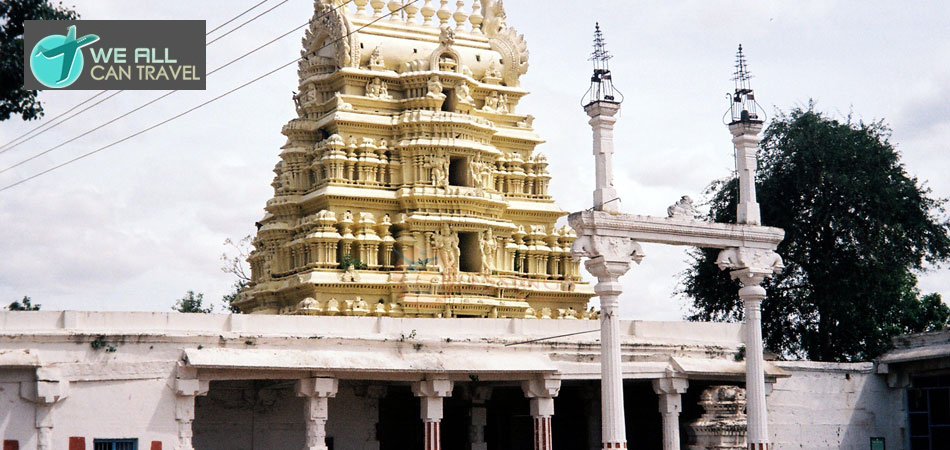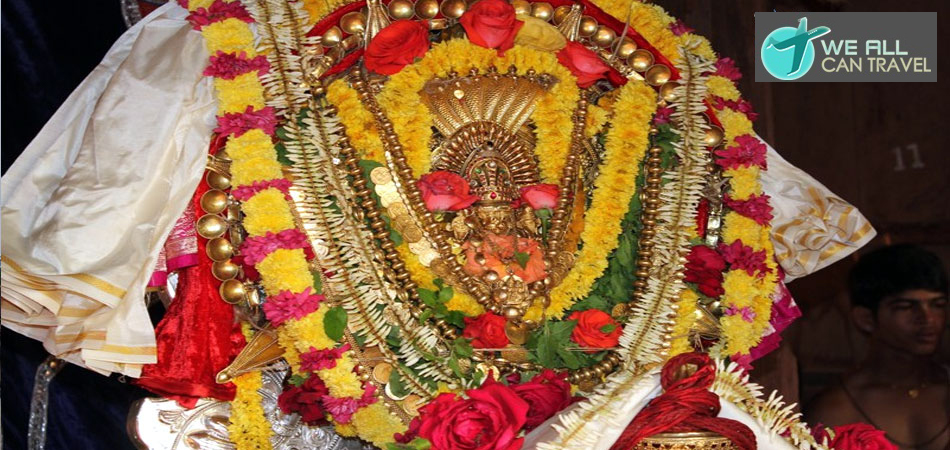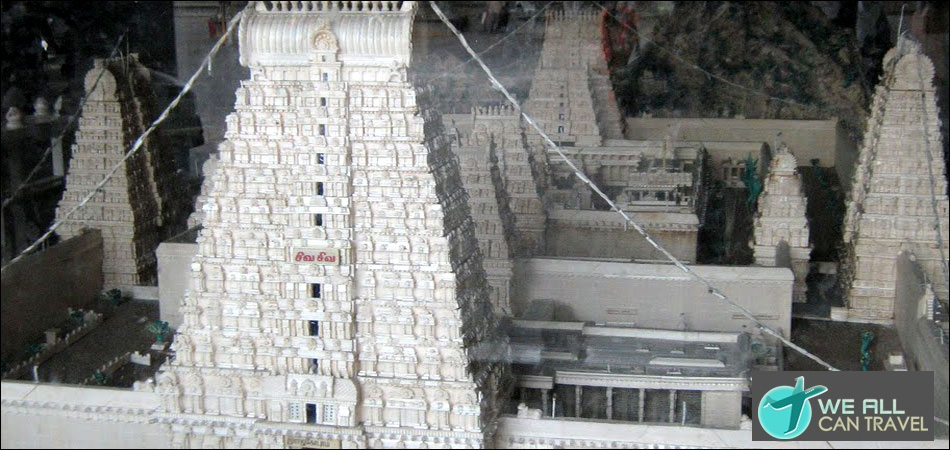Kailasanatha Temple
There is a `Somaskanda` panel in the Kailasanatha temple, which is said to be the original image worshipped here. There is a linga on the rear wall, which belonged to a later age. The row of fifty-eight miniature shrines on all four sides of the courtyard of this temple-complex facing the main temple is very remarkable feature of the temple. All these shrines here are of square shaped and are of sandstone. There are very gorgeous sculptures found inside the inner wall and on some of them the `Somaskanda panel` can be found. There is small gopuram at the entrance of the temple.
The Kailasanatha temple has many attractive sculptures, which portrays the different manifestations of Lord Siva like Dakshinamurti, Lingodhbhavamurti, Gajasamharamurti and many others. These sculptures also depict Siva in various dance poses; speak of the skill and deftness of the Pallava sculptors and master craftsmen. There is a large stone image of Nandi can be seen at a short distance to the east of this temple on a square platform. This massive Nandi sculpture is about six or seven feet in length and faces the main temple. It is ornamented with carvings of bells and jewels and there are four pillars with the Vali motif, one on each corner of the platform. This indicates that probably there was once a roof over it.
The various inscriptions of the Kailasanatha temple provide a lot of information about the history of the Pallavas, especially of the reign of its patron, king Rajasimha. This temple gives a good idea of the history, archaeology, temple architecture and iconography of the South Indian history and culture.
 >> Agasteeshwara Temple
>> Agasteeshwara Temple >> Anantha Padmanabhaswami Temple
>> Anantha Padmanabhaswami Temple >> Ananthasana Temple
>> Ananthasana Temple >> Annapoorneshwari Temple
>> Annapoorneshwari Temple >> Arunachaleshwar Temple
>> Arunachaleshwar Temple